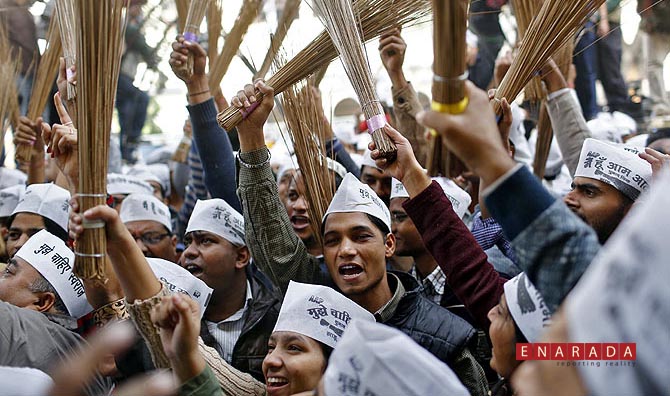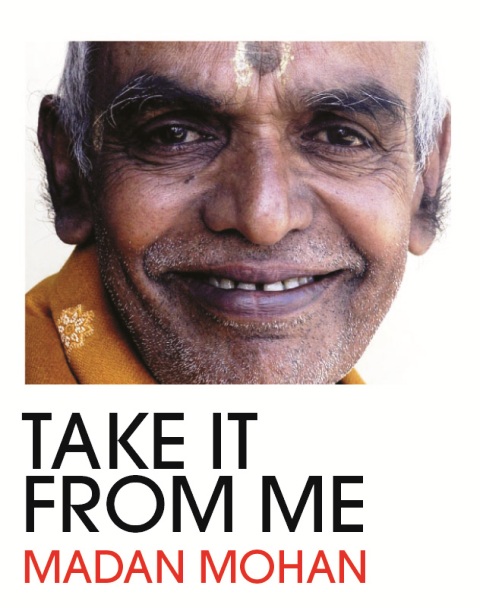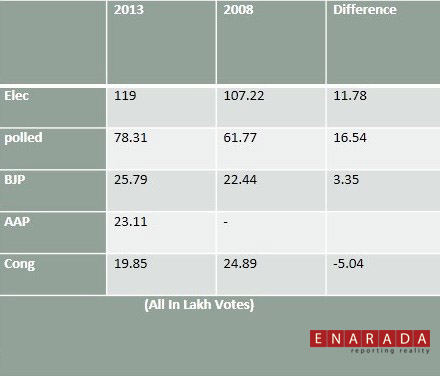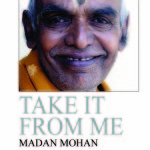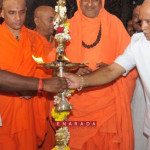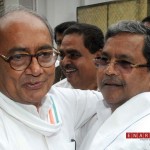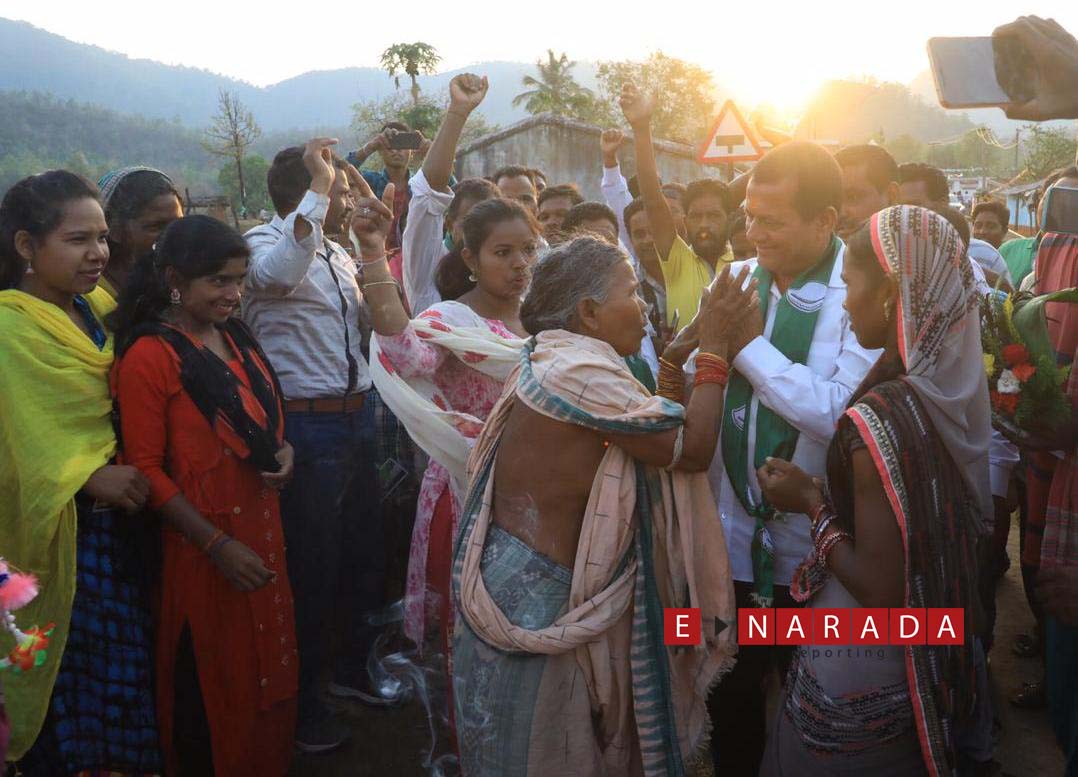ENARADA, Bangalore
By Mathihalli Madan Mohan
As unobtrusively as possible, a section of voters, the newly enrolled ones, is emerging as the game changers in the Indian election arena.
They normally account for around ten percent of the electorate in each election. There is a marked difference between the new and the old voters as for their political preferences are concerned. The old voters seldom change in the political preference they have already made and are susceptible to abstain from voting at any slightest excuse. On the newly
enrolled one are basically apolitical in nature, which are yet to cut the political teeth and would not let the first opportunity to exercise their franchise.
It has been happening in Karnataka, for the past four assembly elections. This segment of voters plumped for BJP whole hog leading to its maiden win in 2008. A portion of them resiled a bit which resulted in Congress wresting the power from BJP in the assembly election held early this year. Elsewhere in the country Trinamool Congress in West Bengal and Jayalalithas’s AIADMK turned the tables to upset the apple cart of their well entrenched political rivals in their respective states to rewrite the political history.
And the Delhi has been the latest, to witness this trend. In the just concluded election to the 70 member assembly, Aam Admi Party led by the Magsaysay award winner, Arvind Kejriwal jolted the two national parties in its debut in the electoral arena. The Congress which
ruled for the fifteen years was could not win the double digit seats. And the BJP to its chagrin found that it has been stopped in its track in its march to power in the national capital territory area. . In a seventy member house, the AAP won 28 seats as against 31 of BJP, with Congress winning single digit seats of 8, with remaining going to others, resulting in a hung verdict.
It may be incidentally noted here that Kejriwal came to fame during the crusade against corruption launched by Anna Hajare, and differed with his mentor to found his own party, the AAP.
There is however a subtle difference between the Delhi and others. In Delhi, the electorate for the first time had an alternative to the BJP and Congress, to be trusted with their vote. In other states, in the absence any alternative, the voters are forced to make a choice between
the existing players, with their support depending on the degree level of anti incumbency mood.
One of the main contributory factors for the good show put by the AAP in its maiden effort lies in the fact, it became the first political party to discover the political potential of the newly enrolled nurtured them to give a political identity, undertook an aggressive campaign to swell their ranks. And talked their language to turn them into its pocket borough. This happened while the established parties behaved as if this class of voters does not exist at and hence had hardly bothered to woo them.
So silent and systematic was the campaign none of the political analysts had taken note of it and the two main line parties, the Congress and BJP continued to pooh-poohed the AAP’s challenge. In addition, the section of voters who were disenchanted with the fifteen year rule of Congress, turned saw in the emergence of AAP, a credible alternative they were looking for. And it is this unusual combination of new voters, and disenchanted old voters, looking for change. which propelled the arrival of the AAP on the political firmament with a bang. And this section moved beyond the caste, community and class barriers created by the established
parties to back the AAP to the hilt.
What the new approach wrought, can be discerned from the table given.
Firstly Delhi witnessed a record turnout, as has been universally acknowledged. The electorate went up by 11.78 lakhs and the polling by another five lakh votes. The obvious inference is that around five lakh established voters, who had stayed away from the polling booths all along turned up at the polling booths for the first time.
The upshot of it was that by a single stroke, the AAP felled two titans the Congress and the BJP while emerging as the second biggest party with a whopping 23.11 lakh voters support to win 28 seats The BJP raked an additional 3.35 lakh vote over its previous tally to win 31 seats and was shocked to find that it missed the simple majority by a whisker. The Congress lost a support of more than five lakh votes, to plummet its tally to a measly eight seats.
The hung verdict normally triggers of a game of horse trading normally. But this did not happen in Delhi, since the AAP took a moral stand that it would sit in the opposition since does not have majority and was averse to seek or extend support for forming government. The Congress despite the poor show was further miffed with AAP spurning the voluntary
offer of support. The BJP which otherwise would have opted for the game of enticing the legislators from other parties (as had happened in Karnataka during the 2008-2013 period) to form government could not do so and declined invitation.
There was an indirect spin off benefit of the AAP’s performanance. The political parties, who for one or other reasons had been averse to enacting the lokapal bill designed to curb corruption, easily ensured its enactment in the two houses of parliament.
The Delhi experience has come as a welcome relief to the electorate of the country, fatigued as it is with the competitive no holds barred electoral battle between the established political parties, aimed more at personal and political aggrandizement with remarkable insensitivity
to public sensibility and probity. The fatigue is getting increasingly manifested in lower and lower poll turn out. It has also been noticed that the national parties are slowly yielding place to regional parties in loksabha elections, even as they continue to gather more political clout in their respective states.
It has shown that given a credible alternative, the voters are willing to give it a chance. Kejriwal and AAP filled the bill suitably. The question is can this replicated elsewhere in the country with a view to revitalizing the political system? There is no reason, why the Delhi
experiment cannot be repeated in other major agglomerations including the metropolitan cities and taken to the grass root level gradually.
But this is better said than done. For, the credible outfit and leadership to evoke response of the voters are rather difficult to come about. All the regional outfits which have come to fore and others which have failed to make a mark, are all led by the politicians and their
stock in trade is not the credibility but the permutations and combinations of social engineering practices for politically promoting the caste and community interests.
And the political parties are more interested in keeping the flock together rather than expand the base by wooing the new voters as a class, which many consider is a risk not worth taking.
Where and how do you get the likes of Kejrwals and the AAPs in other states areas? Difficult it may be. But there is way to do it by tapping the potentials of the segment of new voters called as game changers. Any takers? It is difficult to hazard a guess at the moment,
given the promiscuous political atmosphere.
(Posted on December 19 , 2013 @ 5.40pm)
(Author is a Senior Journalist and Columnist. Mobile: +91 94480 74872 Email : madan.mm@gmail.com)
The views expressed on the website are those of the Columnists/ Authors/Journalists / Correspondents and do not necessarily reflect the views of ENARADA.

